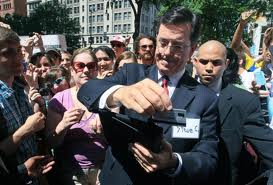 After last week’s focus on donors and what they have to say about their charitable contributions, I’ve decided to change the focus and ask volunteer solicitors to talk about their most rewarding solicitation experience and what needs to happen to keep them involved next year. Similar to last week, this week’s respondents answered an anonymous online survey that they learned about on various social media channels and from blast emails. I’ve picked four really awesome responses to share with you this week that I think provide excellent lessons for non-profit and fundraising professionals. Enjoy!!!
After last week’s focus on donors and what they have to say about their charitable contributions, I’ve decided to change the focus and ask volunteer solicitors to talk about their most rewarding solicitation experience and what needs to happen to keep them involved next year. Similar to last week, this week’s respondents answered an anonymous online survey that they learned about on various social media channels and from blast emails. I’ve picked four really awesome responses to share with you this week that I think provide excellent lessons for non-profit and fundraising professionals. Enjoy!!!
Again … the survey was anonymous because I wanted the truth, the whole truth and nothing up the truth. Here is what the today’s highlighted survey respondent said:
Question: Using the comment box below, please write a paragraph or two about your most rewarding solicitation experience (e.g. when you sat down eyeball-to-eyeball with someone else and asked them to consider making a charitable contribution). Why was it so rewarding for you? How did you feel going into the meeting? And what made you feel comfortable enough with doing such a solicitation?
Answer: I asked the Frye Foundation for money to create a four state event around domestic violence and homeless families. It was rewarding because they became a very interested, active participant in the process and the outcome.
Question: Understanding you are probably a very busy person, what does the charity that you’ve made some solicitation calls for need to do (or show you) in order to renew your commitment as a volunteer solicitor in the next fundraising campaign?
Answer: It needs to call to my ethics . . . it needs to be well run and respected . . . and it needs to show results.
OK … unlike last week when I couldn’t resist weighing in with my thoughts, I’m going to take a risk and ask YOU to weigh-in and share what you think the moral to the story is. And the risk I’m referring to is . . . no one is going to comment and all anyone will hear is the sound of crickets. Please use the comment box below and remember that we can all learn from each other. I also encourage you to share links to resources that you’ve found on the internet.
Here is to your health!
Erik Anderson Owner, The Healthy Non-Profit LLC eanderson847@gmail.com http://twitter.com/#!/eanderson847 http://www.facebook.com/eanderson847 http://www.linkedin.com/in/erikanderson847





